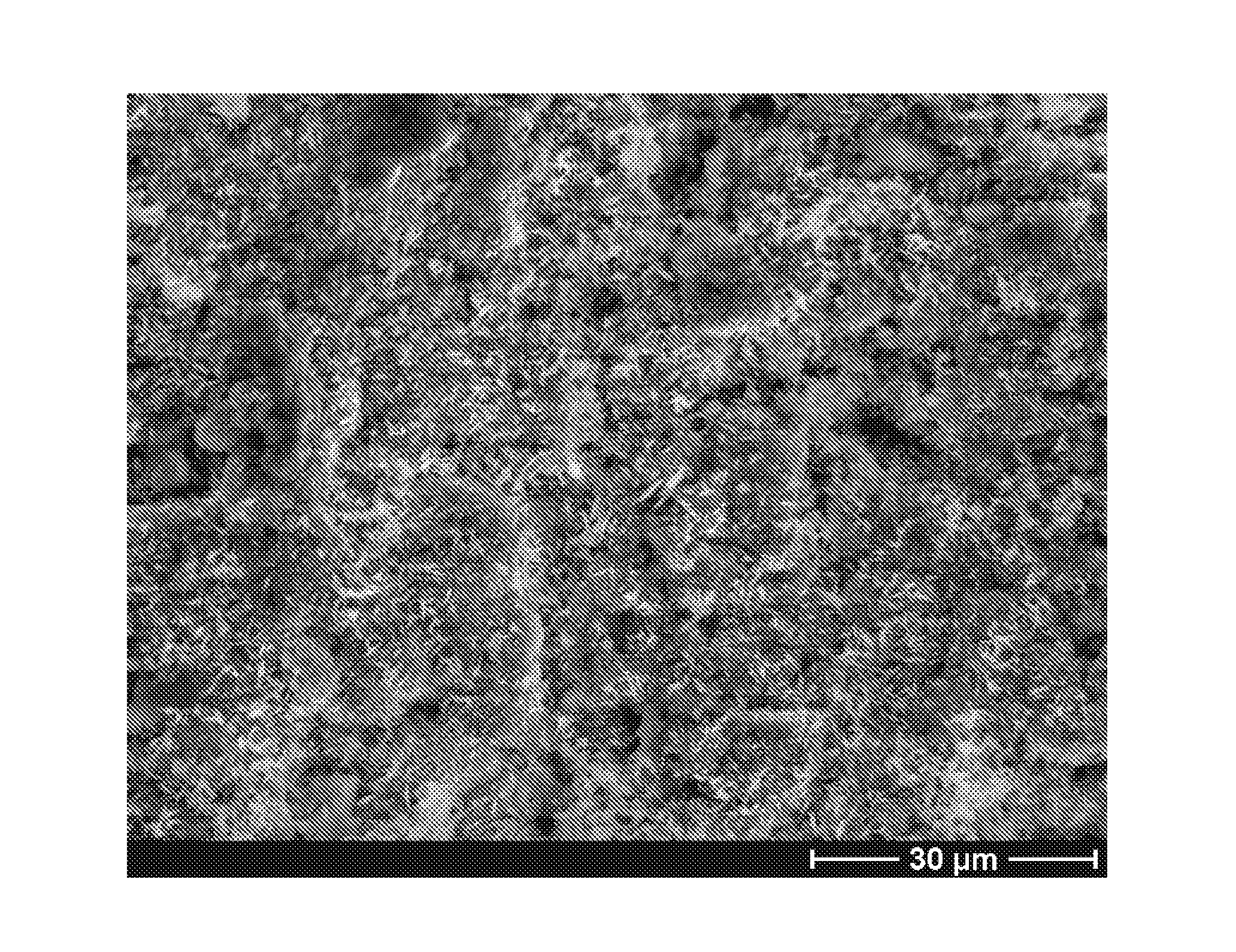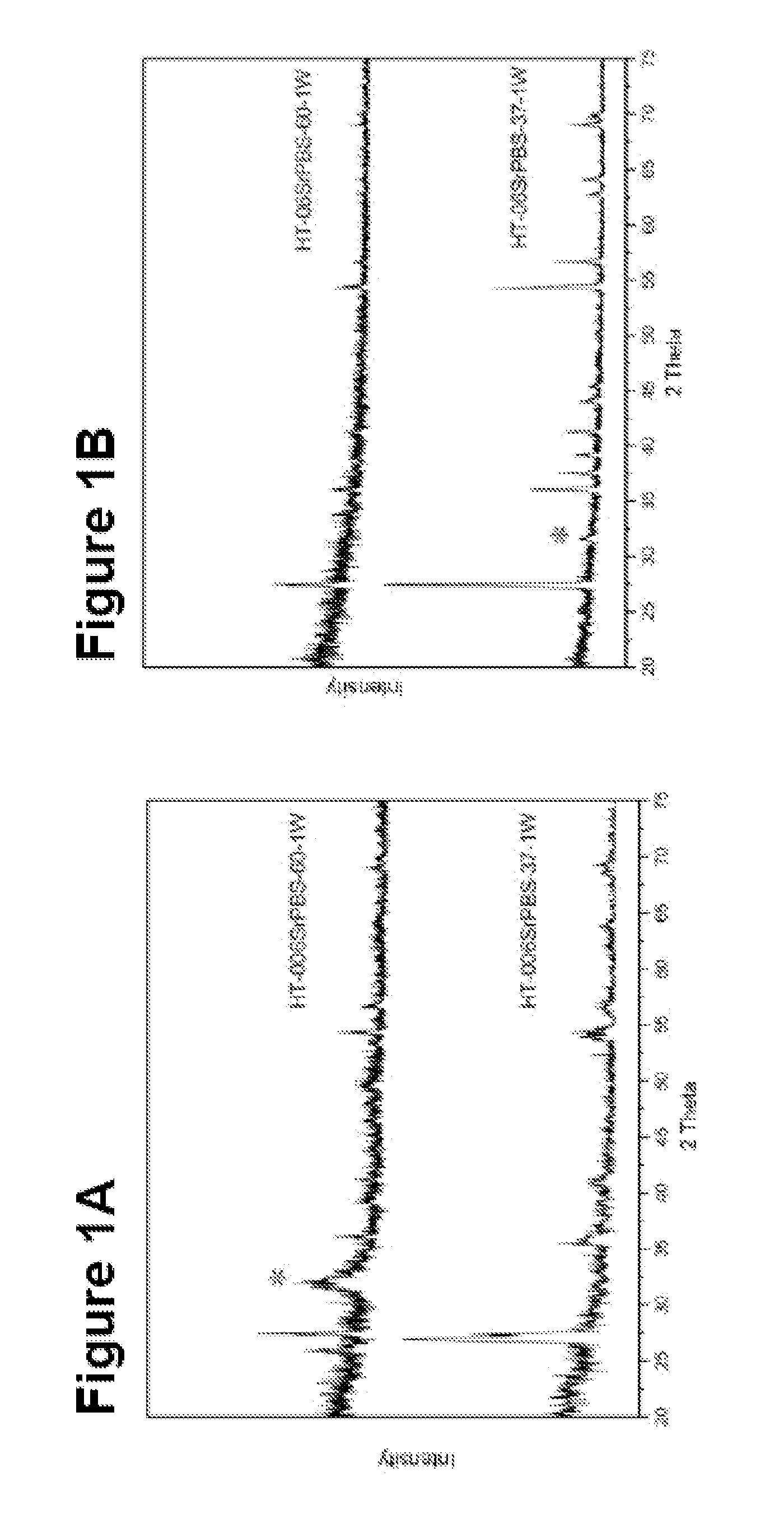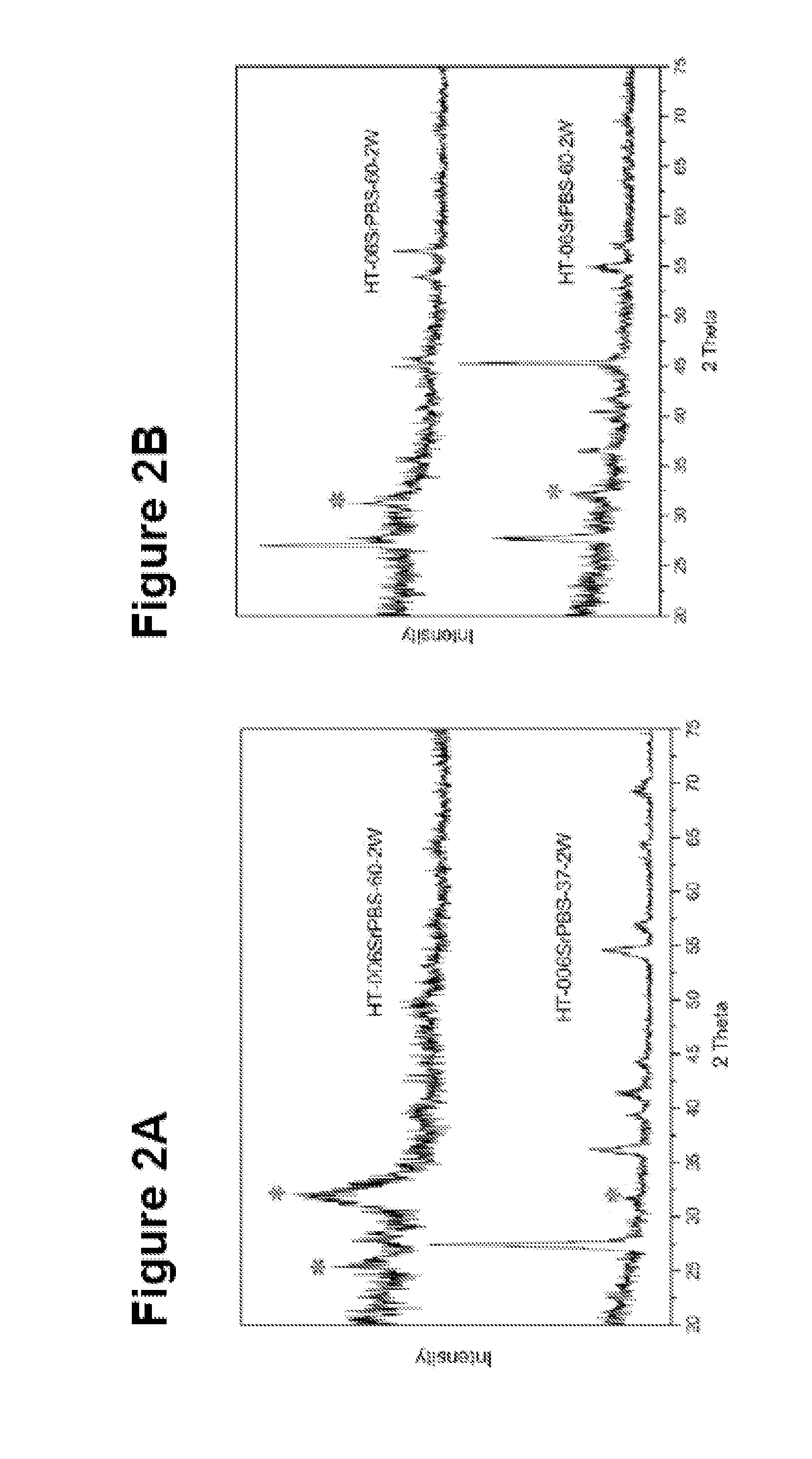Ion substituted calcium phosphate coatings
a technology applied in the field of methods, can solve the problems of limited clinical application of ion substituted ceramics and cements, chemical defects, and relatively thick and brittle coatings
- Summary
- Abstract
- Description
- Claims
- Application Information
AI Technical Summary
Benefits of technology
Problems solved by technology
Method used
Image
Examples
example 1
Deposition of Strontium Substituted Calcium Phosphate Coating on Heat Treated Titanium Surfaces
[0118]10 mm×10 mm titanium plates were treated using heat treatment (at 800° C. for 2 hours) to get titanium dioxide surface. The treated plates were first cleaned ultrasonically in acetone, followed in ethanol, and finally rinsed with de-ionized water and dried at 37° C. Two kinds of mineralizing solutions were obtained from the modified phosphate buffer solution (PBS) (see table 2). The low concentration of Sr PBS was 0.06 mmol / l. The high one was 0.6 mmol / l. The initial pH of the low one was 7.20 and 7.21 at 37° C. and 60° C., respectively. The initial pH of the high one was 7.19 and 7.15 at 37° C. and 60° C., respectively. Every two specimens were soaked into 40 ml preheated solution in a sealed plastic bottle, which were then put into the oven at 37° C. and 60° C., respectively. The plates were incubated for different time periods from 1 week to 2 weeks. All specimens were then rinsed...
example 2
Deposition of Strontium Substituted Calcium Phosphate Coating on PVD Treated Titanium Surfaces
[0120]The coating process was similar to example 1 but the substrates were PVD treated titanium plates.
[0121]The PVD treatment was as following:
[0122]The titanium plates were placed in a PVD chamber (Baltzer 640R). The magnetron effect and the oxygen partial pressure during the coating step were 1.5 kW and 1.5×10−3 mbar, respectively. The setup of the PVD apparatus was optimised for maximum production of the rutile structure in the TiO2 film. The results are shown in FIGS. 10-16.
example 3
Deposition of Silicon Substituted Calcium Phosphate Coating on PVD Treated Titanium Surfaces
[0123]10 mm×10 mm titanium plates were treated using PVD treatment as described in Example 2 to get titanium dioxide surface. The treated plates were first cleaned ultrasonically in acetone, followed in ethanol, and finally rinsed with de-ionized water and dried at 37° C. The mineralizing solution containing silicate was obtained from the modified phosphate buffer solution (PBS). The modified PBS was prepared as the following:[0124](1) 3 mg tricalcium silicate was added into 40 ml PBS solution stirred overnight.[0125](2) The turbid solution was then centrifuged, and the supernatant solution was acted as the mineralizing medium.[0126](3) The pH value and composition of the solution were analyzed by pH meter and ICP-AES, respetively.
[0127]Every two specimens were soaked into 40 ml preheated solution in a sealed plastic bottle, which were then put into the oven at 60° C. for 1 week. All specimen...
PUM
| Property | Measurement | Unit |
|---|---|---|
| Temperature | aaaaa | aaaaa |
| Temperature | aaaaa | aaaaa |
| Fraction | aaaaa | aaaaa |
Abstract
Description
Claims
Application Information
 Login to View More
Login to View More - R&D
- Intellectual Property
- Life Sciences
- Materials
- Tech Scout
- Unparalleled Data Quality
- Higher Quality Content
- 60% Fewer Hallucinations
Browse by: Latest US Patents, China's latest patents, Technical Efficacy Thesaurus, Application Domain, Technology Topic, Popular Technical Reports.
© 2025 PatSnap. All rights reserved.Legal|Privacy policy|Modern Slavery Act Transparency Statement|Sitemap|About US| Contact US: help@patsnap.com



